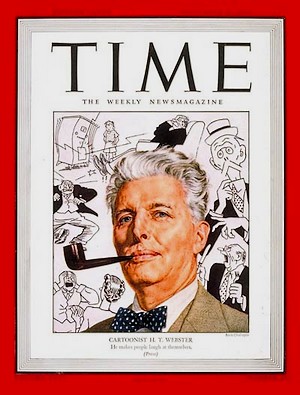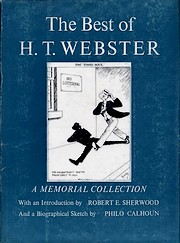我在2004年的小文:小記翻譯名家E Seidensticke
台灣每年入境日本的旅次突破百萬。不過就分類而言,這些多為所謂「有用多數」(useful many),很少的人為「關鍵的少數」(vital few)--日後能成較持久性的「文化財」作出貢獻,或許多淪為popular culture的消費者。
其實,我的這種觀點之立場很「老舊」。譬如說,讀新井一二三 <另一種專業:東京學---JR中央線之謎>(2004.12.08 中國時報 人間;當然新井一二三 等人對於popular culture的想法是對的,這也是真正日本文化能大量輸出到許多外國的主要內容。 )【hc按:這種大都市學的書,西方很平常啦,倫敦-巴黎-維也納-柏林-紐約-芝加哥…..等等不用說,加州的也洋洋灑灑……這有多難呢?其實要有點學術價值的東西,必需有許多原始資料的整理當基礎。過 去我鼓勵羅時瑋先生寫台北等,或許 Low City, High City: Tokyo From Edo to the Earthquake, 1867-1923 - E Seidensticke Middlesex, New York: Knopf, 1983 /UK: Penguin, 1985 《東京.下町.山手》是送給他的…..
譬如說,紐約時報的當地新房地產新產品 'Quality and Convenience,' at a Price
(By ELEANOR CHARLES Published: December 5, 2004 )是萬樁類似事情之一端:
Homes at River Oaks on Long Ridge Road in Stamford are selling for $1.445 million to $1.56 million. "This is an extraordinarily robust upper-end boom in luxury housing with maintenance-free living that is not available in Greenwich or New Canaan," said James Fieber, head of the Fieber Group, builders of the 28-acre subdivision. "Demographically, it's a segment that will increase in viability. It's not downscaling, it's life-scaling that appeals to people from their 30's to their 70's." 】
「凡是對東京歷史有興趣的人,非看美籍日本文學專家Edward Seidensticker寫的《東京.下町.山手》和《東京起來》兩本書不可。但是,書中一句話,叫我這個老東京非常吃驚。老日本通寫道:東京新宿以西是文化沙漠,既看不到傳統日本文化又找不到西方高級文化,除了酒和色以外,就是一無所有。…..
Seidensticker的兩本書在一九八三年以及九二年問世。後來,新宿以西建設了西方高級文化之府幾所:例如,新國立劇場、TOKYO OPERA CITY、府中森藝術劇場等。然而,即使在二十年以前,恐怕大部分東京人不肯同意美國日本通的說法,因為自從二十世紀初,東京的文化前衛始終在新宿以西。 ……」
如果你是<Simon University> 的Seidensticker的忠實讀者,而且記性很好,或許知道此「美國人日本通」是日本文學的名翻譯家,尤其以川端康成作品和<源氏物語>(The Tale of Genji )馳名。我們舉過大江先生的諾貝爾獎演講中對於川端康成標題的歧義之處理。最近google scholar很方便,你想列舉他的作品,彈指間就完成了(希望再幾年也收入「萬國學者作品總匯」,完成全球化大業)。我 這回拜此工具之賜才知道他近年還有一本回憶錄 Tokyo Central: A Memoir (Seattle, Wash.: University of Washington Press, 2002 ) 和論「翻譯技巧」之文收入J Biguenet, R Schulte 主編的The Craft of Translation (Chicago, The University of Chicago Press, 1989); 論文Chiefly on translating the genji (The Journal of Japanese Studies)。前google scholar前兩頁標題大要。日本:Tokyo Rising: The City Since the Great Earthquake - E Seidensticker , Charles E. Tuttle, 1991 《東京起來》【hc:《東京新興起:1923年大地震之後再興記》】Low City, High City: Tokyo From Edo to the Earthquake, 1867-1923 -E Seidensticke Middlesex, New York: Knopf, 1983 /UK: Penguin, 1985 《東京.下町.山手》Japan EG Seidensticker Time-Life, 1968 這本不是台灣翻譯的『早期日本』Tradition and Modernization in Japanese Culture -DH Shively, C Blacker - Princeton University Press, 1971This Country Japan EG Seidensticker Kodansha, 1984Showa: The Japan of Hirohito -C Gluck, SR Graubard Norton, 1992----日本古典文學:【Key Words源氏物語 The tale of Genji平安時代 Heian Period日本文化 The culture of Japan光源氏 Genji The Shining Prince紫式部 Lady Murasaki Shikibu源氏物語の概略 Summary of the tale of Genjihttp://mcel.pacificu.edu/as/students/genji/homepage.html 】The Tale of Genji (Everyman's Library, No.108) Murasaki Shikibu (著), Edward G. Seidensticker (著), Murasaki Shikibu (著) The Tale of Genji (Everyman's Library, No.108)Genji Days - E Seidensticker New York: Kodansha International, 1983 (翻譯 <源氏物語>日紀感言整理。)【舉個例,第97頁10月7日周六 整天早上和前午都在翻譯Hotaru…..Yes, the treatment of Genji is distinctly ambiguous, ironical, one might wish to say; and there is an interesting foretaste of Niou. …(foretaste noun [S] 1. 【事】 先嚐,試食;預嚐到的滋味;預示,前兆,徵象)】The Gossamer Years: A Diary by a Noblewoman of Heian Japan EG Seidensticker -Tuttle, 1964----日本近代文學:Kafu the Scribbler: The Life and Writings of Nagai Kafu, 1879–1959 -永井荷風(他的作品大陸翻譯不少;他筆下的東京當然是翻譯者寫作的重要資料)Seidensticker - Stanford, Calif., Stanford University Press, 1965
讀本 Modern Japanese Stories: An Anthology
I Morris, E Seidensticker, M Kuwata - Tuttle, 1962
三島
The decay of the angel - Y Mishima, E Seidensticker New York: Tuttle, 1973
川端康成:
Thousand Cranes - Y Kawabata, E Seidensticker - Knopf, 1958
Snow Country -Y Kawabata, E Seidensticker - Cited by 1
Knopf, 1956
House of the Sleeping Beauties: And Other StoriesY Kawabata, E Seidensticker Kodansha America, 1994
Edward Seidensticker的英譯川端康成《睡美人》、《禽獸》、《一只手臂》
284 『眠れる美女』-- 睡美人 (川端康成著) full text 本;原要兼談《睡美人》、《禽獸》、《一只手臂》1960年川端康成61歲, 是年,發表了《睡美人》(1月至翌年11月); 1968年 69歲 , 1月,《睡美人》由新藤兼人改編,拍成電影(田村高廣等主
許多話沒說,譬如說,中文翻譯在植物等,很模糊,然而 Edward Seidensticker的英譯,很科學,不會馬虎。 川端康成 的這三篇,《睡美人》、《禽獸》、《一只手臂》
,有內部關聯,雖然作品表表,從1930年代到60年代.....
----自傳和翻譯論[BOOK] The Craft of Translation - Library Search - Web SearchJ Biguenet, R Schulte - Cited by 6Chicago, The University of Chicago Press, 1989[BOOK] Tokyo Central: A Memoir - Library Search - Web SearchE SeidenstickerSeattle, Wash.: University of Washington Press, 2002Genji Days - E Seidensticker New York: Kodansha International, 1983 (翻譯 <源氏物語>日紀感言整理。)
Kafū the Scribbler : the life and writings of Nagai Kafū, 1879-1959 by
Seidensticker, Edward, 1921-2007, authorPublication date
1965Topics
Nagai, Kafū, 1879-1959Publisher Stanford, California : Stanford University PressCollection
inlibrary;
printdisabled;
marygrovecollege;
internetarchivebooks;
americanaDigitizing sponsor
Kahle/Austin FoundationContributor
Internet ArchiveLanguage
EnglishAuthor (alternate script) 永井, 荷風(1879-1959)
vi, 360 pages, 8 unnumbered pages of plates : 24 cm
"Bibliographical note": pages 350-352
Includes index
Part one. The life.
Beginnings -- Exile -- Return -- Withdrawal -- Straggler*s -- The nineteen-twenties -- The nineteen-thirties -- The nineteen-forties and after --
*落後者、敗残兵
Part two. The writings.
The River Sumida --
The peony garden --
Coming down with a cold --
Tidings from Okubo: excerpts --
Rivalry: from chapter 12 --
Quiet rain --
A strange tale from east of the river --
The decoration --
The dancing girl: chapter 10 --
The scavengers
***2018
美國人日本学者、名譯家 Edward Seidensticker (1921 – 2007) 2018
2018.11.19 重讀2004的文章,感慨。一來 傳主2007年過世,紐約時報等有其訃聞:
Aug 31, 2007 - Edward G. Seidensticker, an eminent translator from the Japanese who brought the work of ancient and modern writers to a wide ...
二來,Wikipedia 有此項https://en.wikipedia.org/wiki/Edward_SeidenstickerFrom Wikipedia, the free encyclopedia
Jump to navigationJump to search| Edward G. Seidensticker |
|---|

Edward G. Seidensticker, Fall 2006 |
| Born | February 11, 1921
Castle Rock, Colorado, U.S. |
|---|
| Died | August 26, 2007 (age 86)
Tokyo, Japan |
|---|
| Occupation | Translator of Japanese Literature; Writer; Author |
|---|
| Nationality | American |
|---|
| Period | 1950–2006 |
|---|
Edward George Seidensticker (February 11, 1921 – August 26, 2007) was a noted post-
World War II scholar, historian, and preeminent translator of classical and contemporary
Japanese literature. His English translation of the epic
The Tale of Genji, published in 1976, was especially well received critically and is counted among the preferred modern translations.
[1] Contents
1Biography1.1Early years1.2U.S. Navy Japanese Language School1.3War years1.4Occupation of Japan and foreign service1.5Scholar, educator, and latter years2Translator3Japanologist3.1Honors4Selected works5References6Further reading
---- During his years in Japan Mr. Seidensticker became friends with many of the writers he translated, though the friendships were sometimes tested during the delicate diplomatic dance that is central to the translator’s art. As Mr. Seidensticker recalled in Tokyo Central, some writers required more dancing than others:
- "Tanizaki wrote clear, rational sentences," Mr. Seidensticker wrote. "I do not, certainly, wish to suggest that I disapprove of such sentences; but translating them is not very interesting. There was little I felt inclined to ask Tanizaki about."
- Not so with Kawabata. "Do you not, my esteemed master, find this a rather impenetrable passage?" Mr. Seidensticker recalled asking him, ever so gently, during the translation of Snow Country.
- "He would dutifully scrutinize the passage, and answer: 'Yes,' " Mr. Seidensticker wrote. "Nothing more."[12]
Japanologist[edit]
Seidensticker wrote widely on
Japan, its people, as well as the city of
Tokyo.
His first major non-translation work, "Kafu the Scribbler: The Life and Writings of Nagai Kafu, 1879–1959" (Stanford University Press, 1965), was a biography of
Kafu Nagai, the Japanese writer who is noted for his sensitive depictions of the denizens of Tokyo's pleasure quarters. It was the first study to examine the life and works of Nagai to appear in any Western language. As the book includes a number of Seidensticker translations of Nagai's short stories and novellas, it is neither pure biography nor criticism. Seidensticker, to his lifelong regret, never met Kafū, even though there were opportunities to be introduced.
[19]In
Low City, High City: Tokyo from Edo to the Earthquake (1983) and
Tokyo Rising: The City Since the Great Earthquake (1990), Seidensticker's two-volume history of Tokyo, he weaves a tale of cultural history of how the city was impacted by the advent of Westernization, and how it responded to the twin disasters of the 20th Century—the
Great Kanto earthquake of 1923 and the massive destruction incurred in
World War II due to Allied bombing raids.
In his academic career, he is credited with being a teacher for his peers.
He published his autobiographical observations in Tokyo Central: A Memoir in 2001. A biography and bibliography are included in a commemorative work created by those whose lives he affected, New Leaves: Studies and Translations of Japanese Literature in Honor of Edward Seidensticker (1993).
After retirement, he divided his time between Honolulu and Tokyo, which he described as "the world's most consistently interesting city."
[20]- Japan、(New York:Time inc, 1961).
- 『日本語らしい表現から英語らしい表現へ』(那須聖との共著, 培風館, 1962年)
- 『現代日本作家論』(佐伯彰一訳 新潮社 1964)
- Kafū the Scribbler: the life and writings of Nagai Kafū, 1879-1959(Stanford University Press, 1965).
- 『異形の小説』安西徹雄編訳、南窓社、1972
- 『湯島の宿にて』安西徹雄訳、蝸牛社、1976
- 『日本語とわたし』(Japanese and I)渡部昇一・安西徹雄編注、朝日出版社、1977
- Genji Days, 1977(『源氏日記』安西徹雄訳、講談社、1980)
- 『日本人とアメリカ人』(Japanese and Americans)海老根宏編注、朝日出版社、1978(教科書版)
- 『私のニッポン日記』安西徹雄訳、講談社現代新書、1982
- Low city, high city: Tokyo from Edo to the earthquake, 1983
『東京 下町・山の手』安西徹雄訳、TBSブリタニカ、1986。ちくま学芸文庫 1992/講談社学術文庫 2013 - 『西洋の源氏 日本の源氏』笠間書院、1984
- Tokyo rising: the city since the great earthquake, 1990(『立ち上がる東京』安西徹雄訳、早川書房、1992)
- 『日本との50年戦争 ひと・くに・ことば』安西徹雄訳、朝日新聞社、1994
- 『好きな日本好きになれない日本(Lovable Japan,less lovable Japan)』 廣済堂出版、1998
- 『流れゆく日々 サイデンステッカー自伝』安西徹雄訳、時事通信、2004
- 『世界文学としての源氏物語 サイデンステッカー氏に訊く』伊井春樹編、笠間書院、2005
- 『谷中、花と墓地』みすず書房、2008(自身による日本語著作)
- (松本道弘との共編)『日米口語辞典』朝日出版社、1977(のち最新版)
- 『私の東京』百瀬博教との共著、富士見書房、1989
- The Kagerō Nikki: Journal of a 10th Century Noblewoman、1955(蜻蛉日記、のち The Gossamer Years: the Diary of a Noblewoman of Heian Japanと改題)
- Japanese Music and Drama in the Meiji Era、(小宮豊隆著, Obunsha, 1956)
- Some Prefer Nettles (谷崎「蓼喰ふ蟲」, Knopf, 1955).
- Snow Country (川端「雪国」, C.E.Tuttle , 1956).
- The Makioka Sisters(谷崎「細雪」, Knopf, 1957).
- Thousand Cranes(川端「千羽鶴」, 1958).
- The Izu Dancer(川端「伊豆の踊子」, 1964).
- Lou-lan(井上靖「楼蘭」, 原書房, 1964).
- 「時間」(横光利一)原書房、1965
- The Hateful Age(丹羽文雄「厭がらせの年齢」, 原書房, 1965).
- A Strange Tale from the East of the River (荷風「濹東綺譚」, C.E. Tuttle , 1965).
- Japan, the Beautiful and Myself (川端「美しい日本の私―その序説」ノーベル賞受賞講演)講談社現代新書、1969
- House of the Sleeping Beauties (川端「眠れる美女」, 1969).
- Sound of the Mountain (川端「山の音」, 1970).
- The Master of Go (川端「名人」, 1972).
- The Decay of the Angel (三島「天人五衰」, 1975).
- The Tale of Genji(Knopf, 1976).
- YOU WERE BORN FOR A REASON (明橋,伊藤「なぜ生きる」(監修)).
****
The Nobel Prize in Literature 1968 was awarded to Yasunari Kawabata "for his narrative mastery, which with great sensibility expresses the essence of the Japanese mind"
https://www.nobelprize.org/prizes/literature/1968/summary/
川端康成諾貝爾獎演說:日文、英文
Yasunari Kawabata – Nobel Lecture - NobelPrize.org
https://www.nobelprize.org › literature › l...“I am living in a world of morbid nerves, clear and cold as ice… I do not know when I will summon up the resolve to kill myself. But nature is for me more ...
川端 康成 Kawabata Yasunari, 11 June 1899 – 16 April 1972)
川端康成 《日本的美與我》喬炳南譯,台北:臺灣商務,1970/1985 三版
學者‧英譯家 Edward Seidensticker(1921~2007)
中譯者喬炳,只知道在日本任教(70~80年代),我未有進一步消息。
.....山水.....從庭園的意義,又引申為「優雅古趣」,以及「寂靜、清瘦」的旨趣。但是,「和敬清寂」的茶道所尊重的「幽靜古雅」指的當然是潛藏於「心」中的豐盛.......
..,In the Oriental word for landscape, literally "mountain water," with its related implications in landscape painting and landscape gardening, there is contained the concept of the sere and wasted, and even of the sad and the threadbare. Yet in the sad, austere, autumnal qualities so valued by the tea ceremony, itself summarized in the expression "gentally respectful, cleanly quiet," there lies concealed a great richness of spirit; ......



 Webster published over 15,000 panels over the course of 40-plus years as a newspaper cartoonist. A memorial collection of his cartoons, The Best of H. T. Webster, published in 1953, a year after his death, featured an introduction by the Pulitzer Prize-winning author, Robert E. Sherwood, and made the best seller lists. In his introduction, Sherwood wrote,
Webster published over 15,000 panels over the course of 40-plus years as a newspaper cartoonist. A memorial collection of his cartoons, The Best of H. T. Webster, published in 1953, a year after his death, featured an introduction by the Pulitzer Prize-winning author, Robert E. Sherwood, and made the best seller lists. In his introduction, Sherwood wrote,